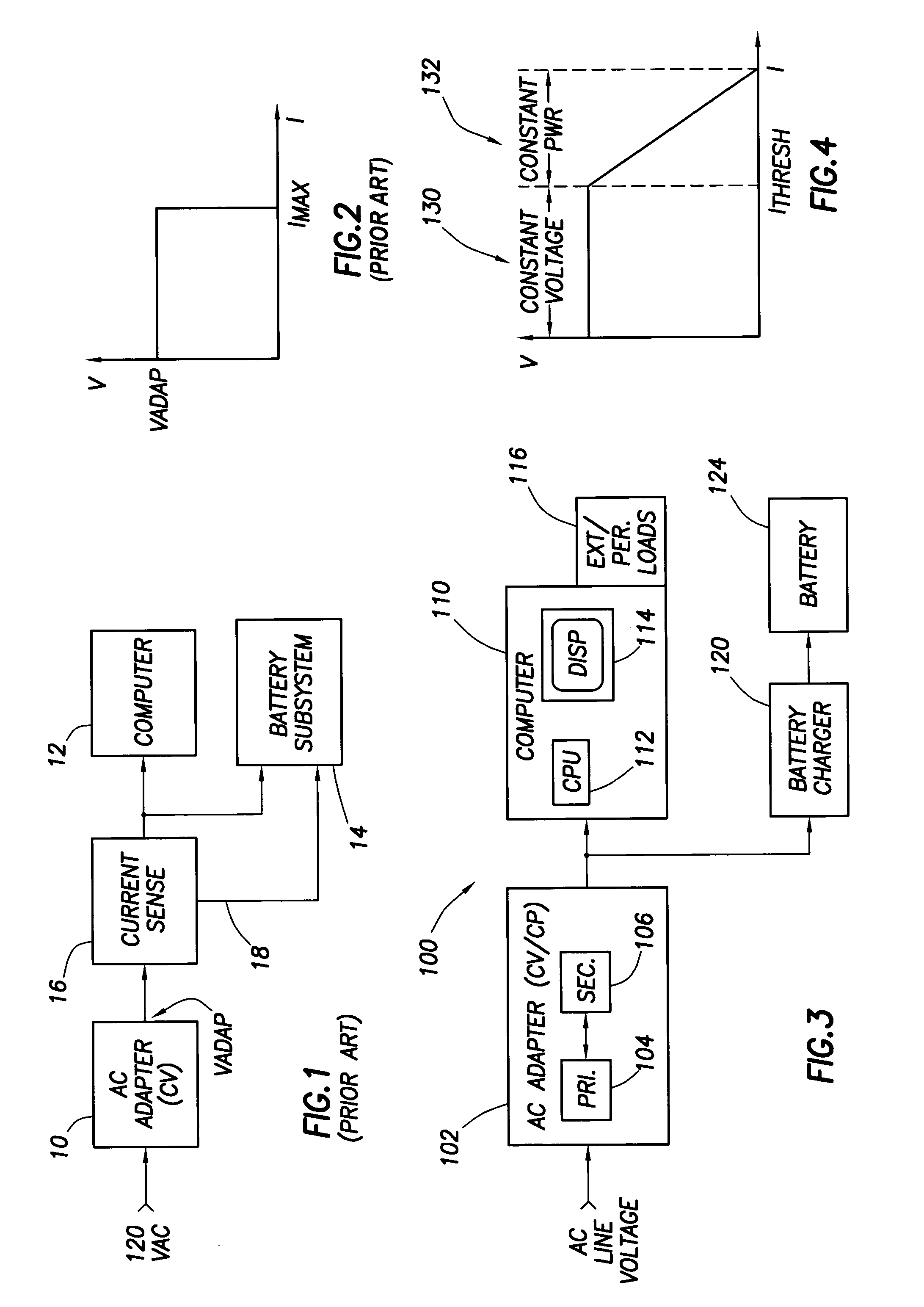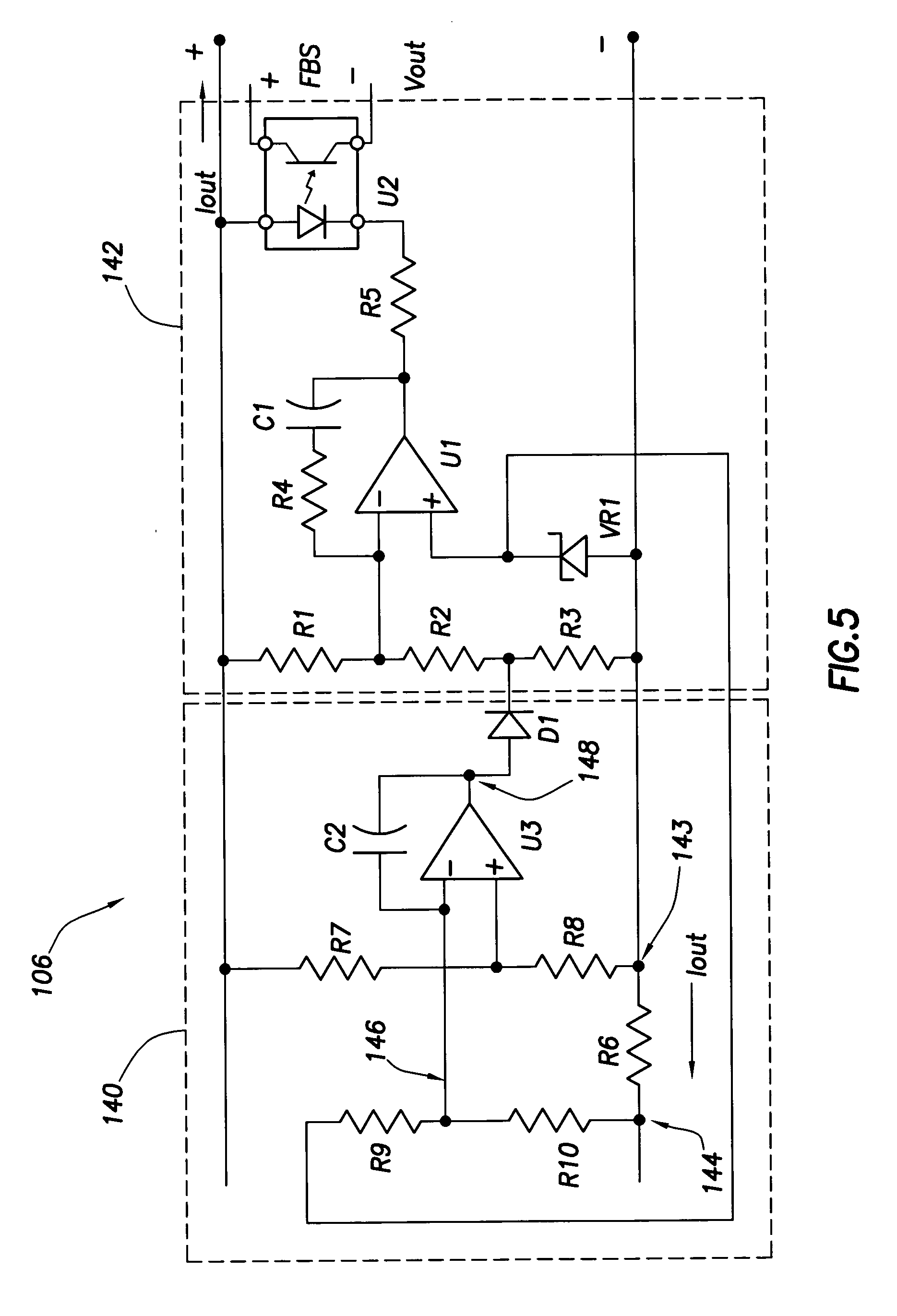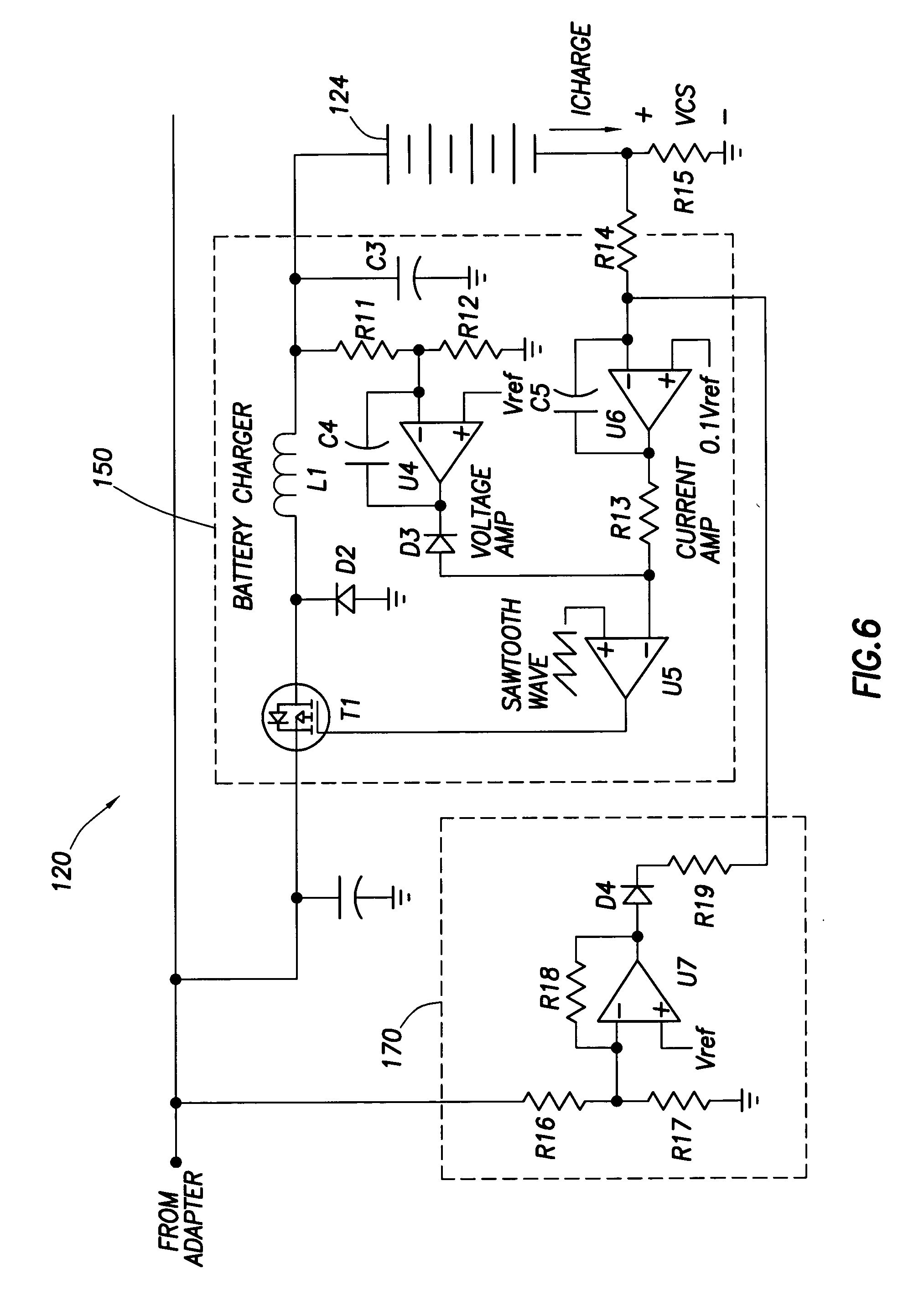Technique for conveying overload conditions from an AC adapter to a load powered by the adapter
a technology of overload conditions and ac adapters, which is applied in the direction of electric variable regulation, process and machine control, instruments, etc., can solve the problems of primary circuits reducing output voltage, and achieve the effects of reducing power draw, reducing or even ceasing the charge current to the battery, and reducing the charge curren
- Summary
- Abstract
- Description
- Claims
- Application Information
AI Technical Summary
Benefits of technology
Problems solved by technology
Method used
Image
Examples
Embodiment Construction
[0028] Referring now to FIG. 3, computer system 100, constructed in accordance with the preferred embodiment of the invention, includes an AC adapter 102, a computer 110, a battery charger 120, and a battery 124. As shown, the AC adapter 102 converts the incoming AC line voltage to a lower DC output voltage (e.g., 18 VDC) and provides the DC power to the computer 110 and the battery charger 120 to operate those subsystems. Other components may be included as desired.
[0029] The computer 110 generally includes one or more CPUs 112, a display (e.g., an LCD display) 114, one or more peripheral or external loads (e.g., PCMCIA cards, modems, CD ROM drive, etc.), and other components known to those of ordinary skill in the art that have been omitted for sake of clarity. For purposes of the preferred embodiment, computer 110 simply represents a load on the AC adapter 102.
[0030] The battery charger 120 represents another load on the adapter 102. In general, the battery charger comprises a ...
PUM
 Login to View More
Login to View More Abstract
Description
Claims
Application Information
 Login to View More
Login to View More - R&D
- Intellectual Property
- Life Sciences
- Materials
- Tech Scout
- Unparalleled Data Quality
- Higher Quality Content
- 60% Fewer Hallucinations
Browse by: Latest US Patents, China's latest patents, Technical Efficacy Thesaurus, Application Domain, Technology Topic, Popular Technical Reports.
© 2025 PatSnap. All rights reserved.Legal|Privacy policy|Modern Slavery Act Transparency Statement|Sitemap|About US| Contact US: help@patsnap.com



